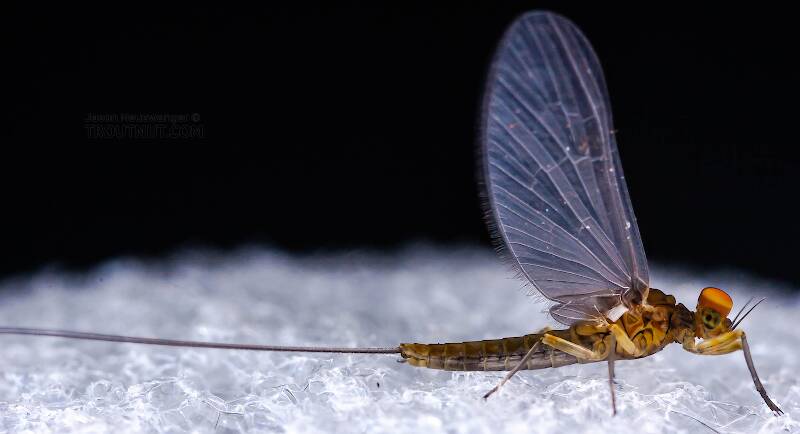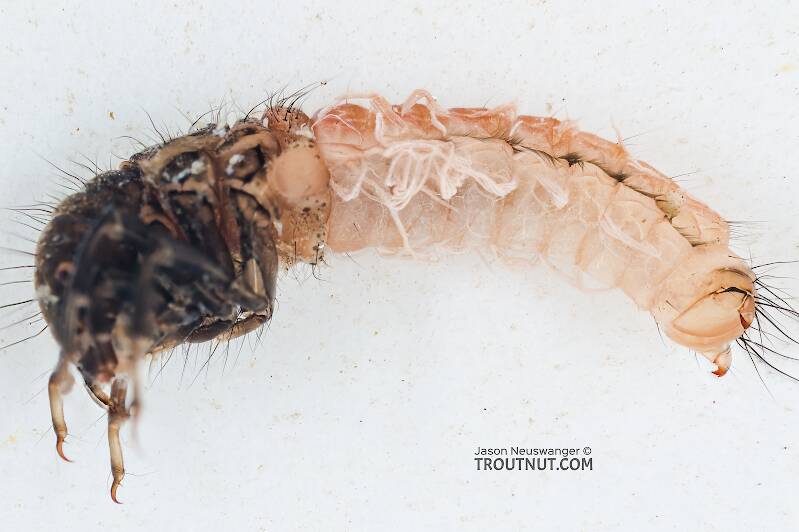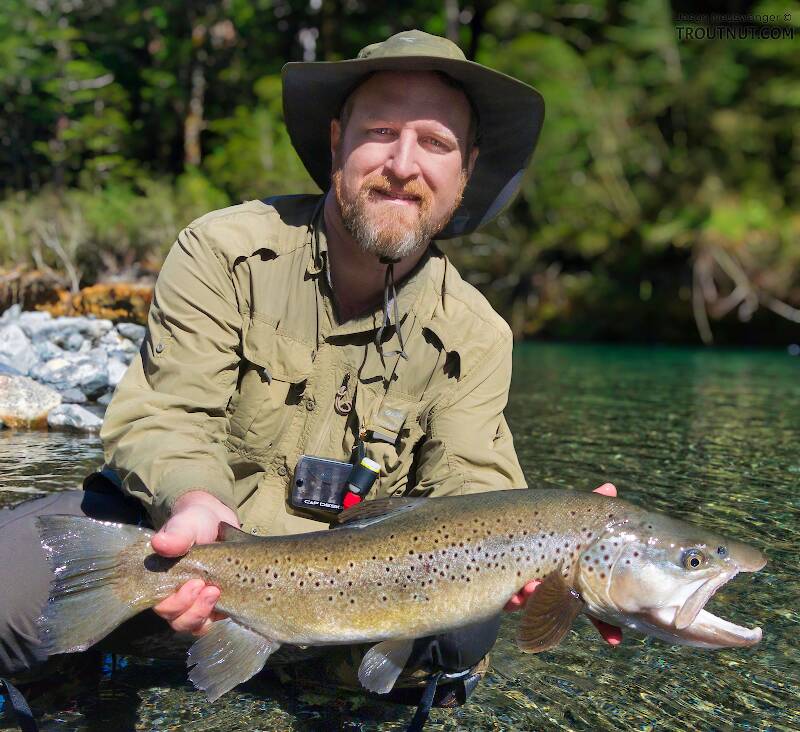
Blue-winged Olives
Baetis
Tiny Baetis mayflies are perhaps the most commonly encountered and imitated by anglers on all American trout streams due to their great abundance, widespread distribution, and trout-friendly emergence habits.


Mayfly Species Paraleptophlebia packii (Mahogany Duns)
Species Range
Spinner behavior
Ernest Schwiebert reports in Matching the Hatch that the spinners return four days after emerging as duns.Nymph biology
Current speed: Slow water
Physical description
Most physical descriptions on Troutnut are direct or slightly edited quotes from the original scientific sources describing or updating the species, although there may be errors in copying them to this website. Such descriptions aren't always definitive, because species often turn out to be more variable than the original describers observed. In some cases, only a single specimen was described! However, they are useful starting points.
Male Spinner
Wing length: 12 mm
This is our largest species of the genus. The sexes are alike in color, all brown, deepening to shining black on top of thorax and at both ends of abdomen, paler on appendages. Wings subhyaline with brown veins, and with a brown tint in the membrane at the roots. Costal cross veins numerous but weak as far as the stigmatic area where they are crowded; their tips strongly curved outward and often forked. Sometimes they anastomose forming a few small cells in an outer series next the costa. Vein Cu2 unattached at base. The forceps has a rounded basal lobe-like dilatation. The penes are separated by a broad U-shaped notch as wide as deep; the terminal orifice is guarded by a rounded inner lobe and an outer triangular tooth. The reflexed spur is short, lance-like or bladelike, and acute at the apex.
Female Spinner
Wing length: 12 mm
The subanal plate in the female is divided into two elongate triangular lobes that extend rearward beyond the abdomen more than the length of the 9th segment (see fig. 134).
Start a Discussion of Paraleptophlebia packii
References
- Caucci, Al and Nastasi, Bob. 2004. Hatches II. The Lyons Press.
- Knopp, Malcolm and Robert Cormier. 1997. Mayflies: An Angler's Study of Trout Water Ephemeroptera . The Lyons Press.
- Needham, James G., Jay R. Traver, and Yin-Chi Hsu. 1935. The Biology of Mayflies. Comstock Publishing Company, Inc.
- Schwiebert, Ernest G. 1955. Matching the Hatch. MacMillan Publishing Company.
Mayfly Species Paraleptophlebia packii (Mahogany Duns)
Species Range
Common Name
Resources
- NatureServe
- Integrated Taxonomic Information System
- Global Biodiversity Information Facility
- Described by Needham (1927)

